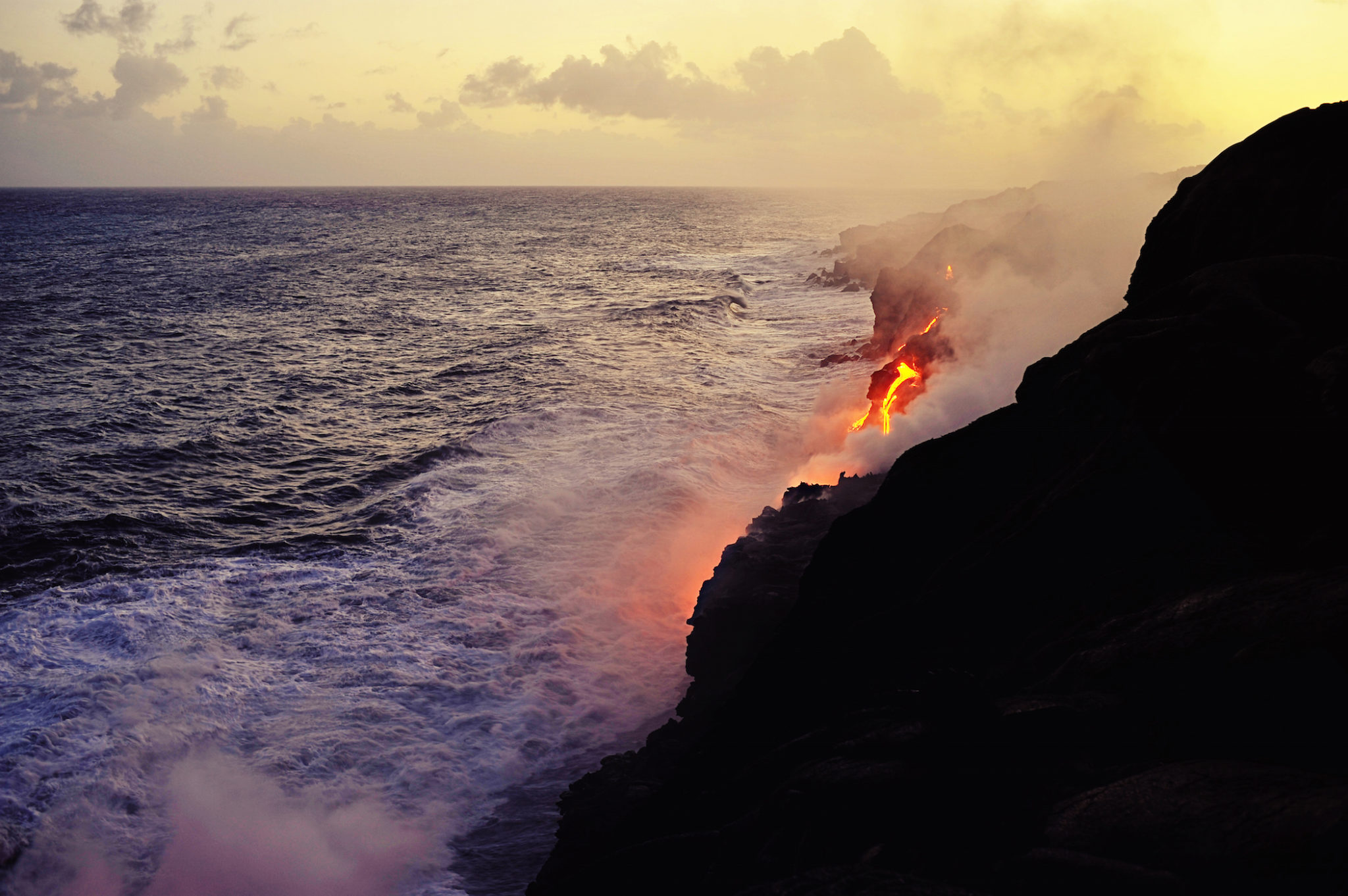A history and geology of the Big Island.
Text by John Vavricka
Images by John Hook
The Hawaiian Island archipelago has been forming for over 80 million years. A volcanic hot spot deep below the surface of the warm Pacific Ocean supplies seemingly unlimited raw material for island building. This hot spot is fixed, but the islands themselves glide along on the Pacific Plate, one of the largest of Earth’s many tectonic plates. As this plate moves, the islands also move gradually farther and farther away from the source of their creation. Of the eight major Hawaiian Islands, Kaua‘i is the oldest, formed some 5 million years ago; Big Island is the youngest, and closest to the hot spot. In fact, the landmass we call the Big Island is made up of five volcanoes, and two of them are still considered active: Mauna Loa, which last erupted in 1984, and Kilauea, which has been actively erupting since 1983.
So what does this mean for real estate on the Big Island?
It means that real estate here can be at risk of volcanic activity. Because the forming of the islands happens on a timescale much longer than we’re used to considering (hundreds, if not thousands, of years can pass between eruptions), the Big Island has been mapped into nine lava flow hazard zones. Zone 1 is the most likely to be affected by future volcanic activity, while Zone 9 is least likely.
Big Island land prices reflect this risk of volcanic activity. As of April 2015, Multiple Listing Service included 866 listings for land under $25,000. The vast majority of these listings are in lava zones 1 to 4. While houses can be permitted and built in any zone, the availability of insurance and financing can be limited in the higher-risk lava zones, especially in zones one and two. Check with a local real estate agent for details on insurance and financing options.
As you explore Big Island real estate, you’ll likely discover many beautiful lots and homes in lava zones 1 to 4. Life abounds here, where lava has met the sea and created new land. As native plants slowly begin to take root in the new rock and soil, and birds start their regular visits, there is something about the essence of these areas that is inspiring and fresh. Perhaps some day lava will come again, but in the meantime, these are incredible areas to live in, at least for a while.
More information on the Big Island lava hazard zones can be obtained from the United States Geological Survey at pubs.usgs.gov/gip/hazards.

